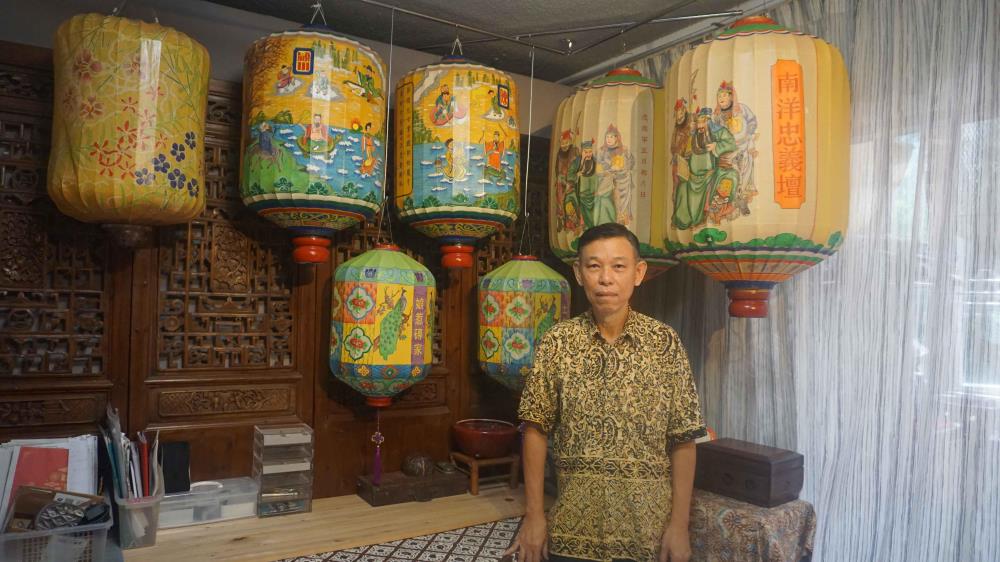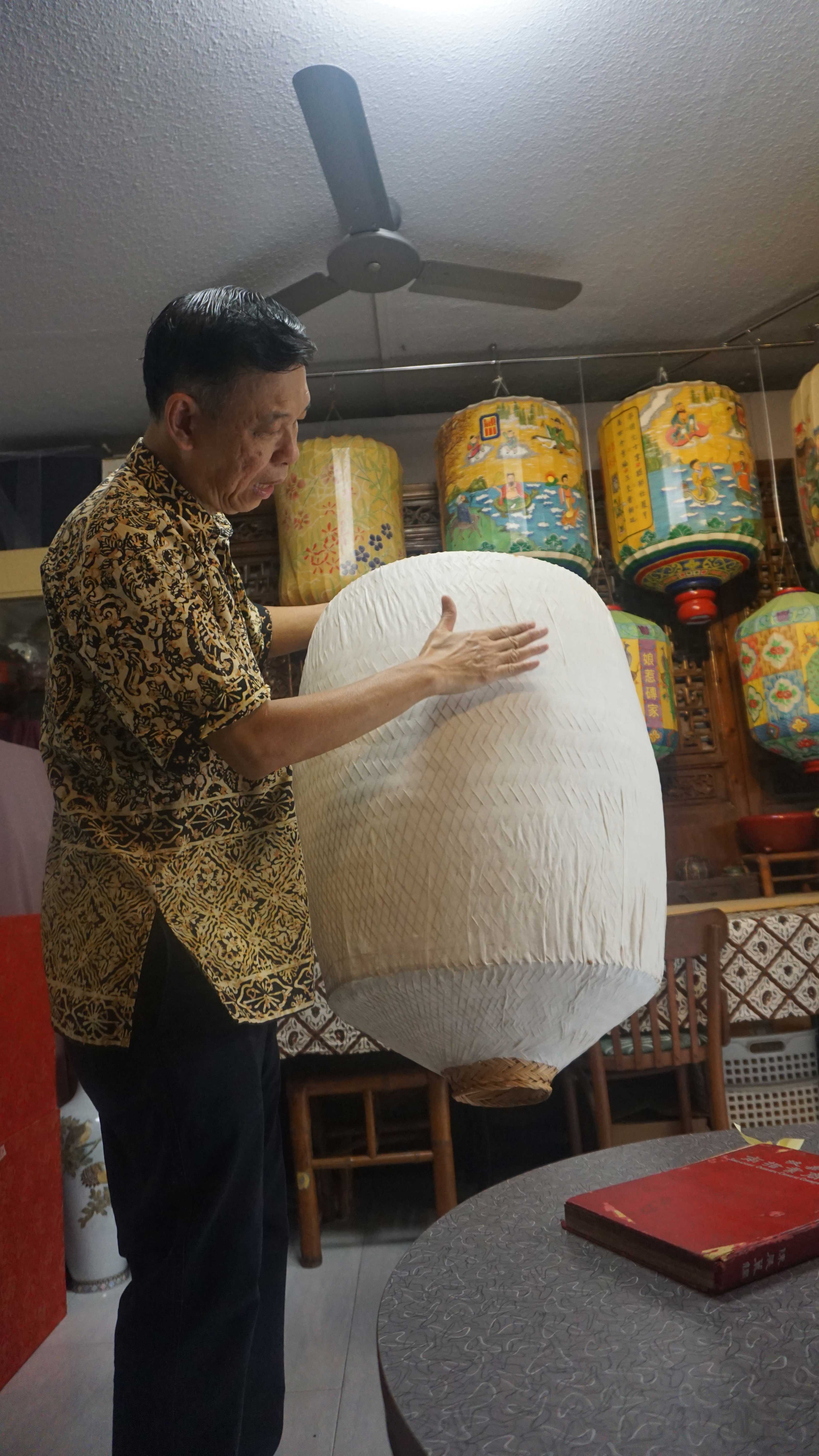Making of Traditional Chinese Lanterns
The making and hanging of Chinese lanterns to celebrate festivals such as the Yuanxiao Festival (元宵节, the 15th day of Chinese New Year) dates back to the Han Dynasty (206BC-220AD) in China. In Singapore, lanterns are hung during Chinese New Year and the Mid-Autumn Festival outside homes, temples and clan associations, and included in lantern displays and local parades. The largest lantern displays in Singapore can be found during the Mid-Autumn Festival at Chinatown and Gardens by the Bay.
Geographical Location
The making and hanging of Chinese lanterns is practised by Chinese communities around the world. There are regional variations; for example, lanterns made in different provinces in China reflect the local characteristics of each place. Foochow and Teochew lanterns are most common in Singapore, and lantern makers have also incorporated local influences into their designs. For example, a maker of Foochow lanterns, Mr Wong Pui Fatt, has tried using batik dye on the cloth which covers the lantern frames, and painting contemporary motifs such as orchids and the SG50 logo.
Communities Involved
In Singapore, the Chinese community is involved in hanging up the lanterns, while the making of the lanterns is a more niche craft. Temples or clan associations may light lanterns in celebration of deities’ birthdays, or festivals and other occasions like funerals or weddings. Occasionally, individual households or collectors may also commission lanterns.
Associated Social and Cultural Practices
Lanterns are hung as a form of display art to commemorate religious events or other occasions like funerals and weddings. They may be painted with different motifs depending on the occasion. Traditional motifs include deities, tigers, dragons, surnames and The Eight Immortals Passing the East Sea. Lanterns have been a part of the Chingay parade (a parade held every Chinese New Year in Singapore) since 1973, and are included in lantern displays and parades during the Mid-Autumn Festival.
The making of Chinese lanterns consists of five basic steps. They are the process of ‘twisting’ (揻), ‘tying’( 扎), ‘gluing’ (糊), ‘painting’ (绘) and ‘lighting up’ (亮). The basic materials used for traditional Chinese lanterns are bamboo frames and oil-coated silk paper.
Some organisations also conduct classes teaching members of the public how to make lanterns in the run-up to the Mid-Autumn Festival. However, the lanterns made in these classes are made from red packets and cellophane, not bamboo splints.
The two types of lanterns produced in Singapore –Teochew and Foochow lanterns—differ in the frames and drawings. The most common type of Teochew lanterns are “Oval Lantern” (大何灯笼) and “Persimmon Lantern” (大柿灯笼), as named after their respective shapes. For Foochow lanterns, a common type is the “umbrella lantern” (伞灯).
According to Mr Wong Pui Fatt, Foochow lanterns usually have a cylindrical frame and the lantern can be collapsed by shifting the base plate along two parallel bars found within the centre of the frame. Teochew lantern frames do not have these bars, as the frame is woven with a mold and should support itself upon completion. Foochow lanterns also have more detailed drawings, while drawings on Teochew lanterns are made with rougher, faster strokes.
Experience of a Practitioner
Mr Yeo Hung Teo is a lantern maker who owns Yeo Swee Huat Paper Agency. The store was opened by Mr Yeo’s father and has been in business since 1956. Mr Yeo took over the business when his father passed on. He and Mr Wong Pui Fatt, an individual lantern maker who specialises in Foochow lanterns, are believed to be the only two remaining traditional Chinese lantern makers in Singapore. Mr Yeo usually imports lantern frames from China before painting over the lanterns, while Mr Wong makes his lanterns from scratch.
Mr Wong tries to raise awareness and interest about lantern-making through his Facebook page, where he uploads information and photographs about his lanterns. He has also taught at workshops held at the Sun Yat Sen Nanyang Memorial Hall.
Present Status
The making of traditional Chinese lanterns faces long-term challenges. Not many young people are interested in joining the trade because of the long working hours, tight deadlines and low profit margins. There has also been a decline in demand for traditional handmade lanterns because it is cheaper and faster to import them directly from China. While there is demand for traditional Chinese lanterns from temples, which require large numbers for occasions like the Yuanxiao Festival, traditional handmade lanterns take a long time to make; hence the preference for cheaper, commercialised lanterns.
Furthermore, while there have been attempts in recent years to promote traditional lantern making and encourage innovation in making traditional items, not many people are interested in making lanterns full-time. Mr Wong himself is a part-time lantern maker, and notes that people running their own businesses would have no time to pass on their skills.
References
Reference No.: ICH-081
Date of Inclusion: October 2019
References
Chen, X. P. and Huang, W. Z. 民间灯彩 (Folk Lanterns). China: ZhongGuo Qing Gongye Chubanshe, 2009.
Tan, Sue-Ann. “Mid-Autumn Festival revives old Chinatown”, The Straits Times, 2018. https://www.straitstimes.com/singapore/mid-autumn-festival-revives-old-chinatown. Accessed 12 January 2019.
Yeo, Jesvin. “Master Jimm Wong PuiFatt”, The Lasting Visual Memory, 2013, http://jesvin.parel.co/lastingvisualmemory/portfolio/master-jimm-wong-puifatt/. Accessed 9 May 2019.







